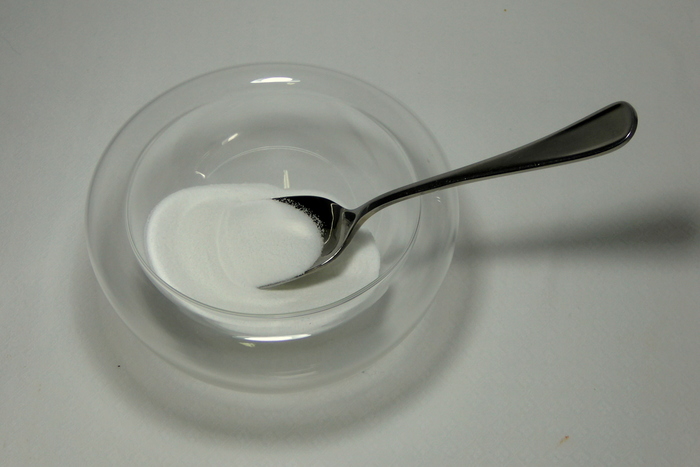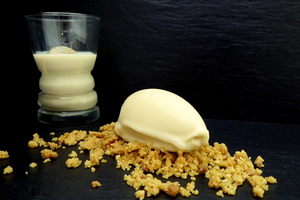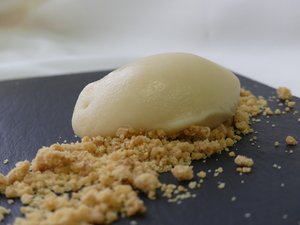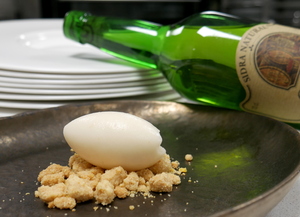Maltodextrina
Maltodextrin originates as a result of the enzymatic reaction of starch.
Its main characteristic is that it attracts fat. When mixing an oil with maltodextrin you get a powder or fat lumps. But the maltodextrin is also highly soluble in water, which is why when mixing it with our saliva the fat is freed and catches by surprise the eater who wasn’t expecting that from an apparently dry food, and then there’s the positive reaction when tasting an oily fat.
Maltodextrin is slightly sweet, but one could say it’s practically tasteless. That´s why it can be used with both sweet and salty fats.
It’s an ingredient broadly used in the precooked food industry for its stabilizing characteristics and its ability to keep fat at bay to release it when eaten. It’s also a powerful drier. It’s a food supplement used by athletes for its caloric content and its capacity to quickly raise the sugar levels in blood.
It’s a white powder and it comes from any starch rich plant, although the most common one is tapioca.
Maltodextrin is also used to add body to beer.
-
Type of dish
- Beers
- Cocktails
- Breakfasts and brunch
- Burguers
- Juices, milkshakes and beverages
- Shellfish
- Bread and pastries
- Pizzas, patty
- Dessert
- Pasta
- Sándwich
- Pastries
- Finger foods
- Ice creams and sorbets
- Legumes
- Salads
- Eggs
- Patty
- liqueur
- Harvard plate
- Main course
- Meats
- Fish
- Birds
- Vegetables
- Soups and creams
- Rices
- Coffee, chocolate and infusion
- Cheeses
- Appetizers and canapes
- Temperature
- Cuisine type
- Additional culinary preparation
- Conservation technique
- Seasonal recipes
-
- Aromatic herbs
- Beverages
- Big game hunt
- Bread and pastries
- Canned goods and pickles
- Cereals
- Condiments, spices and additives
- Cooked, salted, preserved and cold meats
- Dried fruits and nuts
- Dry pulses
- Edible oils and vinegars
- Eggs and derivatives
- Feathered game hunt
- Fish cuts
- Fishes
- Insects
- Kitchen and bakery tecniques
- Kitchen and bakery utensils
- Meat cuts
- Meats
- Milk, cream and derivatives
- Mushrooms
- Offal
- Pasta, rice, flour and derivatives
- Poultry
- Seafood
- Service techniques
- Service utensils
- Vegetables cuts
- Vegetables, fruits, tubers and seaweed




